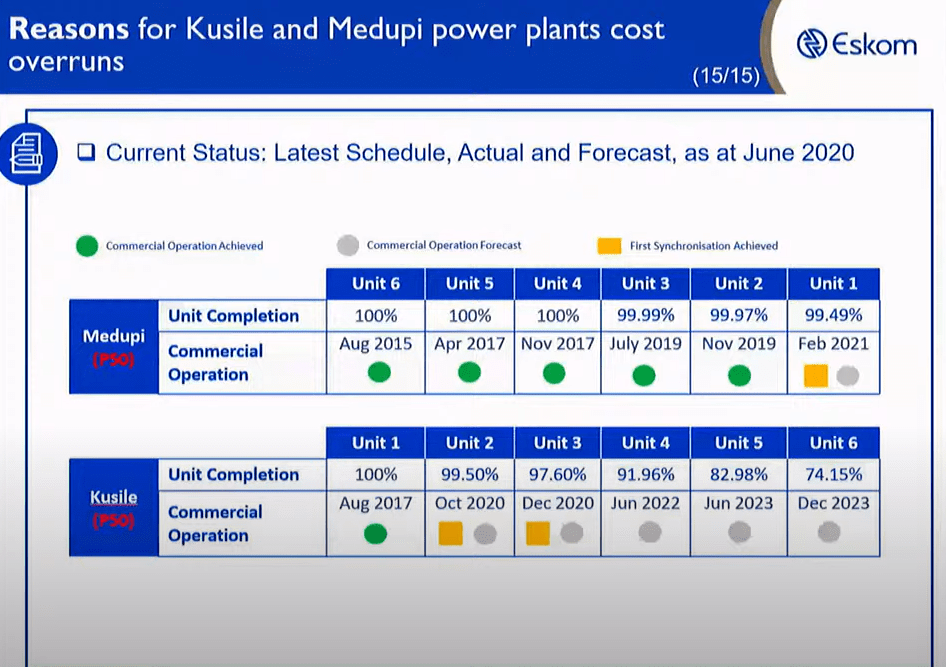Deputy President David Mabuza says that the introduction of the Medupi and Kusile power plants to South Africa’s electricity grid will help ease the country’s load shedding.
Mabuza, who was answering oral question in the National Council of Provinces on Thursday (3 September), said that the latest round of load shedding was due to maintenance challenges and an ageing fleet.
“Our people will understand that we are dealing with a very old fleet and from time to time we are dealing with operational problems,” Mabuza said.
However, he said that the Medupi power plant is set to be fully operational by the end of the year and it will gradually reduce the pressure on the generation of electricity.
He added that the introduction of Independent Power Producers (IPPs) will also help with the country’s power cuts.
National Council of Provinces Oral Replies by the Deputy President https://t.co/A72DhjDDHH
— David D Mabuza (@DDMabuza) September 3, 2020
It is unclear how Medupi will alleviate South Africa’s power pressures, since the station’s final unit was synchronised with the national grid in August 2019, and is already producing power.
Flooding in December 2019 triggered failures at the station, and was the cause of Eskom having to pull 6,000MW from the national grid, pushing the country to its highest-ever stage of load shedding – stage 6 – at the time.

The Medupi and Kusile power plants have both faced significant construction delays and have been marred with allegations of overspending and poor development.
In a parliamentary briefing to the Standing Committee on Appropriations on Wednesday (2 September), Eskom said that one of the key reasons for the cost overrun was that insufficient ‘upfront’ work was done on the projects, leading to ‘incomplete scoping’ before the awarding of contracts.
The projects also faced time constraints due to the increased demand for power, while additional work that was not part of the original build plan led to delays. Kusile will be completed by 2022.
Other problems which were identified for contributing to the delay include:
- Changes in environmental standards and requirements;
- Construction started without a firm design;
- Projects were stalled due to funding availability;
- South Africa does not have the necessary skills and expertise to construct ‘megaprojects’.
- Strikes action led to significant delays;
- Contractor performance and quality control was of poor performance;
- Resource constraints;
- Investigations into corruption;
- Low productivity.

On Friday (4 September), Eskom said it implement load shedding at stage 3 from 08h00 until 22h00 on Friday, with power cuts set to continue for the rest of the weekend.
The reduction to stage 3 is due to reduced demand and improved weather after the country faced stage 4 load shedding on Thursday, it said.
“In order to replenish emergency generation reserves, load shedding will continue into the weekend. The system remains unreliable and vulnerable,” it said.
Generation units have returned at Tutuka, Matla, Majuba and Camden power stations, however two additional units have suffered breakdowns. Unplanned outages amount to 11,185MW, with a further 5,040MW out in planned maintenance.
For those living in the major metros, they can check to see when they will be affected:
For access to other load shedding schedules, Eskom has made them available on loadshedding.eskom.co.za.
Smartphone users can also download the app EskomSePush to receive push notifications when load shedding is implemented, as well as the times the area you are in will be off.


